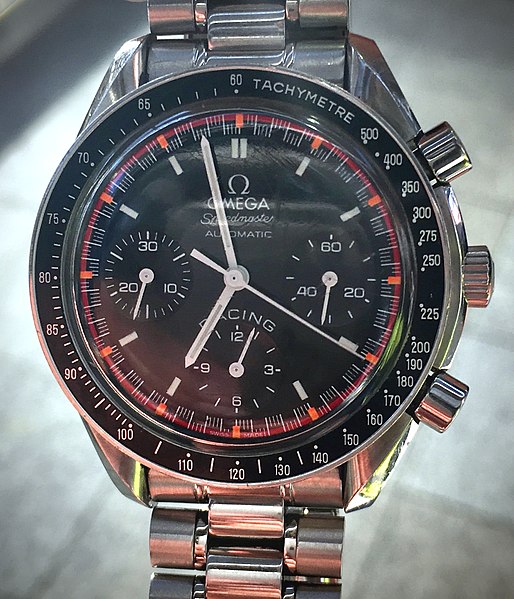A stopwatch is a timepiece designed to measure the amount of time that elapses between its activation and deactivation.
A digital stopwatch
Digital stopwatch
The first ever chronograph. A chronograph combines the functions of a stopwatch and a standard watch.
Mechanical chronograph Omega Speedmaster having two buttons (start/stop and reset) besides the crown
A chronograph is a specific type of watch that is used as a stopwatch combined with a display watch. A basic chronograph has an independent sweep second hand and a minute sub-dial; it can be started, stopped, and returned to zero by successive pressure on the stem. More complex chronographs use additional complications and can have multiple sub-dials to measure seconds, minutes, hours and even fractions of a second. In addition, many modern chronographs use moveable bezels as tachymeters for rapid calculations of speed or distance. Louis Moinet invented the chronograph in 1816 for use in tracking astronomical objects. Chronographs were also used heavily in artillery fire in the mid to late 1800s. More modern uses of chronographs involve aircraft piloting, auto racing, diving and submarine maneuvering.
An Omega Speedmaster Professional, which is commonly regarded as one of the most iconic chronographs ever produced.
Gallet MultiChron Astronomic (c. 1959)—complex mechanical chronograph with 12-hour recording capabilities, automatic day, date, month, and moon phase display.
Tianjin Sea-Gull ST1901 chronograph movement (based on the Swiss Venus 175)
Miyota caliber 6S21 quartz chronograph movement








